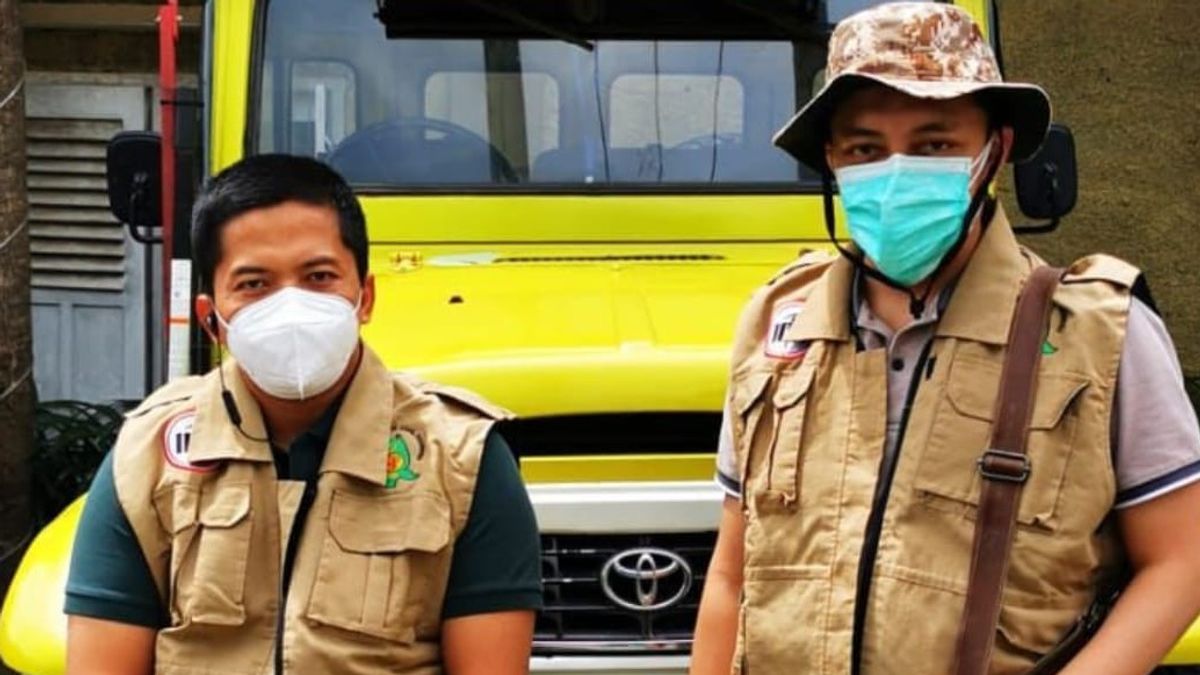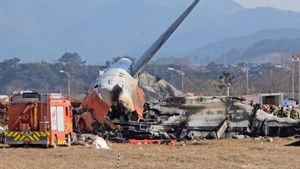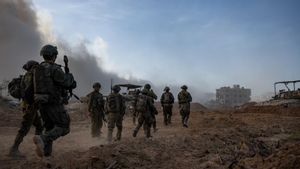LUMAJANG - The Central Board of the Indonesian Pediatrician Association (IDAI) sent a number of pediatricians who are members of the IDAI Disaster Task Force to assist health workers in the Mount Semeru eruption disaster area, East Java.
The General Chairperson of IDAI, Dr Piprim Basarah Yanuarso, SpA(K) said, "The IDAI Disaster Task Force Volunteer Team and IDAI members in nearby areas have carried out initial surveys to map health conditions and provide health services for victims of the Mount Semeru eruption, especially children. . We will also coordinate with the local government, local health facilities, as well as IDI Branches and Disaster Management Agencies in the area in order to maximize the potential for assistance from IDAI Disaster Task Force Volunteers.”
The IDAI disaster task force team was divided into two affected areas in Lumajang, namely in the Pronojiwo sub-district and the Candipuro sub-district. Dr. Kurniawan Taufiq Kadafi, SpA(K) – Head of the IDAI Disaster Task Force who led the search in Pronojiwo District explained that the referral process for disaster victims in the area would be assisted by the Regency Government and Malang City Government. At the time of sweeping the area through 4 (four) evacuation points, namely: the village office of Oro-Oro Ombo, SDN 2 and SDN 4 Oro-Oro Ombo, and the Oro-Oro Ombo Mosque, no adult victims and children with burns were found. The four refugee points accommodate refugees from the affected village, namely Supit Urang village.

In the initial sweep in the Pronojiwo sub-district, Dr. Kurniawan Taufiq Kadafi, SpA(K) Together with IDAI Malang member Dr. Daendy Nova SpA also distributed 2,500 medical masks through the local health center and given directly to the health post while conducting health checks on refugees in the area. . Based on the results of the survey, Dr. Kadafi noted that the area currently needs clean water assistance due to power outages, making it difficult for residents to access clean water. In addition, sanitary napkins and blankets for all ages are also needed. Meanwhile, in terms of food, Dr. Gaddafi recommended that people who want to provide assistance should not be dominant in giving instant noodles because they need clean water which is still the main obstacle in the area. The emergency public kitchen that was built at SDN 02 Oro-Oro Ombo is currently the main point of distribution of ready-to-eat food for the refugees.
Meanwhile, dr Muhammad Reza, M. Biomed, SpA(K) from the IDAI Disaster Task Force who is also a member of IDAI Probolinggo is tasked with scouring the Candipuro Lumajang sub-district and coordinating with IDI Lumajang to provide immediate health services for disaster victims. In the Lumajang Regency area, there are 7 centralized evacuation posts belonging to the district government, and 4 evacuation posts in the Candipuro area. Meanwhile, the distribution center for logistical assistance is at the Regent's Hall and the Lumajang Regional Disaster Management Agency (BPBD) as the coordinator of the reception and distribution of logistics, medical equipment and medicine assistance is centralized at the Lumajang Health Office. On average, the refugee camps in the Candipuro range contain 40 to 60 children, of which 40 percent of the total refugees in Candipuro are toddlers.

For the Candipuro area, all disaster victims who require specialist treatment will be referred to the Pasirian Hospital as the closest, Bhayangkara Hospital and Haryoto Hospital in Lumajang. Until now, Dr. Reza has found 2 teenagers with moderate burns at the Pasirian Hospital, no inhalant trauma patients or other infectious conditions are the direct impact of the eruption. Meanwhile, adult patients still dominate with burn conditions being treated in several Referral Hospitals. The number of deaths for children is still uncertain because evacuation in affected locations is still quite difficult with limited weather, infrastructure and manpower.
Based on the survey, Dr. Reza noted that the Candipuro area refugees needed a lot of help with children's clothes, blankets, children's diapers, formula milk, baby food, clean food utensils and baby toiletries.
Overall, the IDAI Disaster Task Force has yet to find any cases of ARI and diarrhea in children on the first and second days. However, Dr. Kadafi and Dr. Reza agreed to say that in general cases of ISAP, diarrhea and pneumonia in children in disaster areas will usually only be seen between the third or fifth day. Until now, the IDAI Disaster Task Force team is still in charge of monitoring and assisting health services in the two areas (around Mount Semeru) while coordinating with related parties.
Recommended parental guide for children when a volcanic eruption occurs
1. Parents must continue to monitor and comply with government warnings during a disaster. If recommended by the government to evacuate immediately, then do it immediately and early2. Parents should monitor the air quality in their environment, especially those related to volcanic ash3. Children should play and be active indoors, and prevent children from doing outdoor activities to avoid excessive inhalation of ash. So that children do not get bored, parents or family members should make and invite children to make games in the room 5. Parents should regularly clean the room to prevent exposure to ash in the room
6. If a family member has to leave the house, they must wear a mask. Volcanic ash can cause skin irritation, so children should wear long sleeves and long pants to minimize contact with volcanic ash Preventing inhalation of dust also prevents the transmission of covid 19 while in evacuation. To avoid eye irritation due to dense eruption ash, children can use glasses. Before evacuating, parents should prepare emergency medicines and emergency supplies in an emergency bag11. Avoid evacuating in the area downstream of the eruption, and it is better to evacuate to a post that has been set by the government12. Stay disciplined in maintaining health protocols while in evacuation
The English, Chinese, Japanese, Arabic, and French versions are automatically generated by the AI. So there may still be inaccuracies in translating, please always see Indonesian as our main language. (system supported by DigitalSiber.id)










